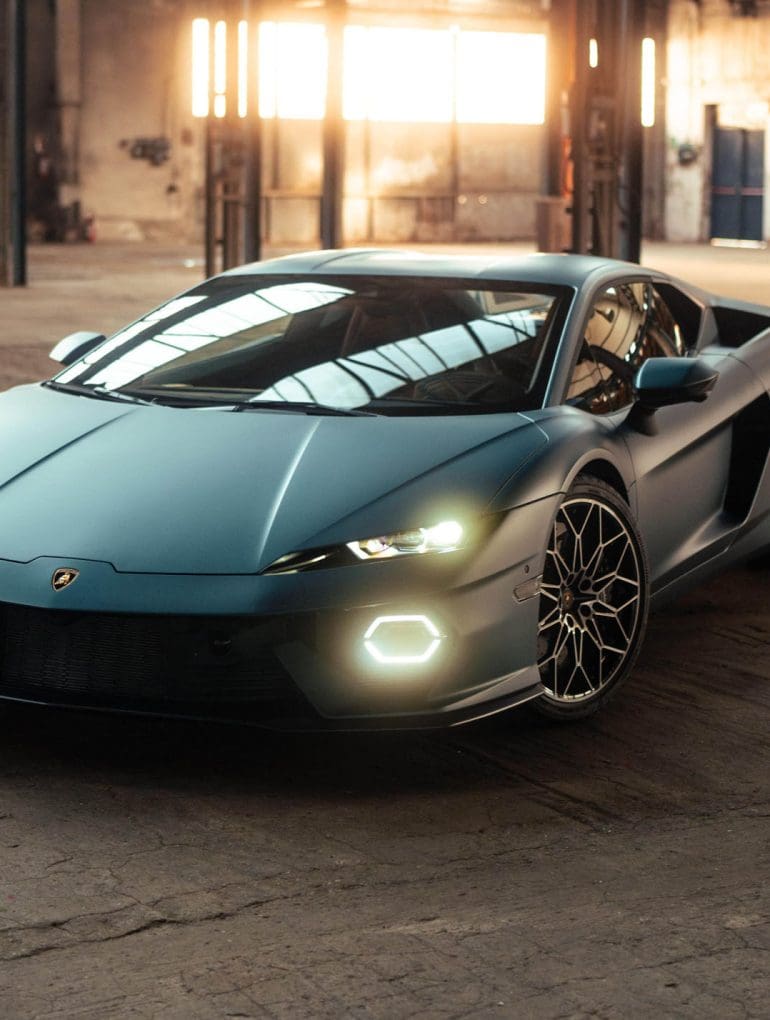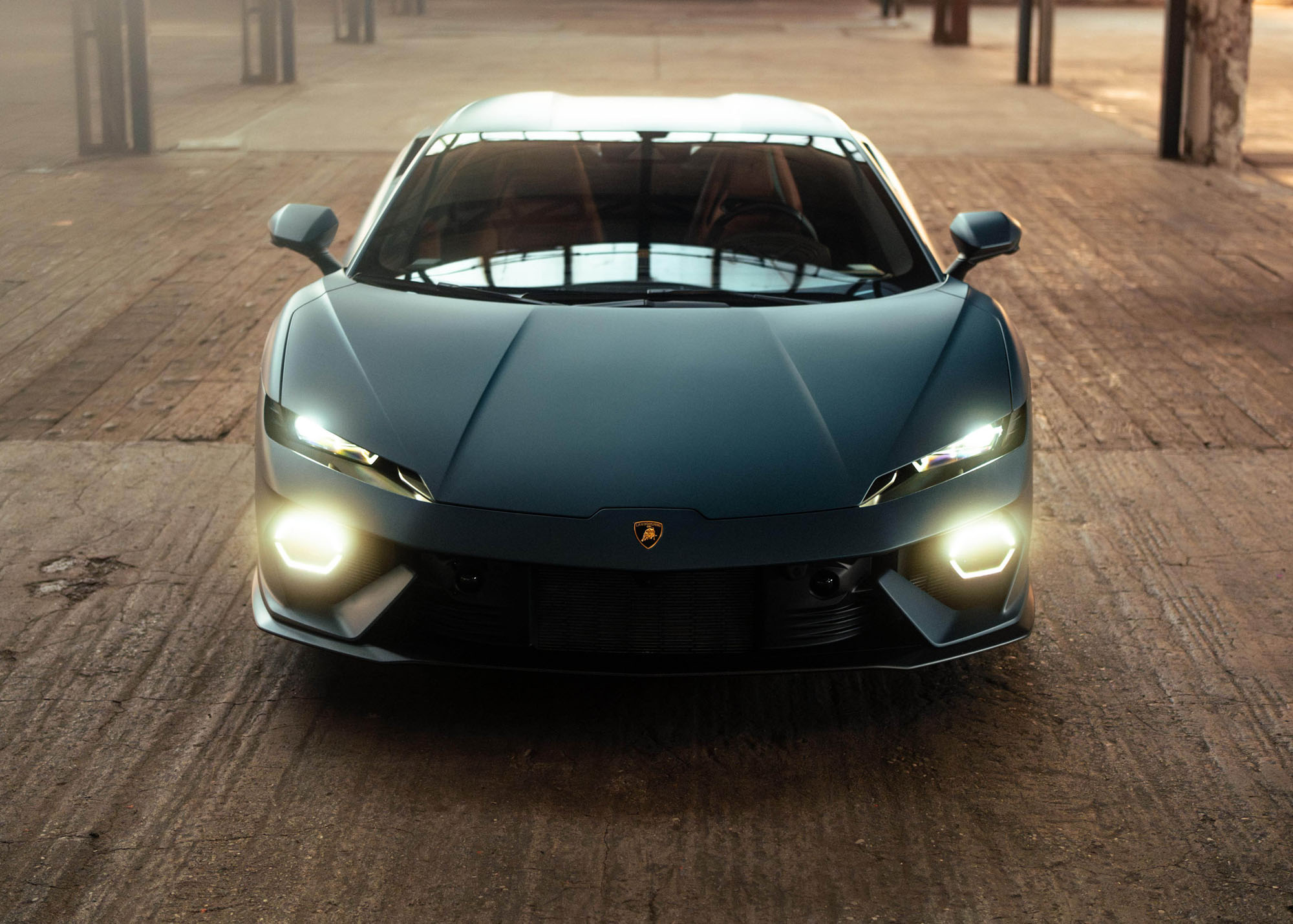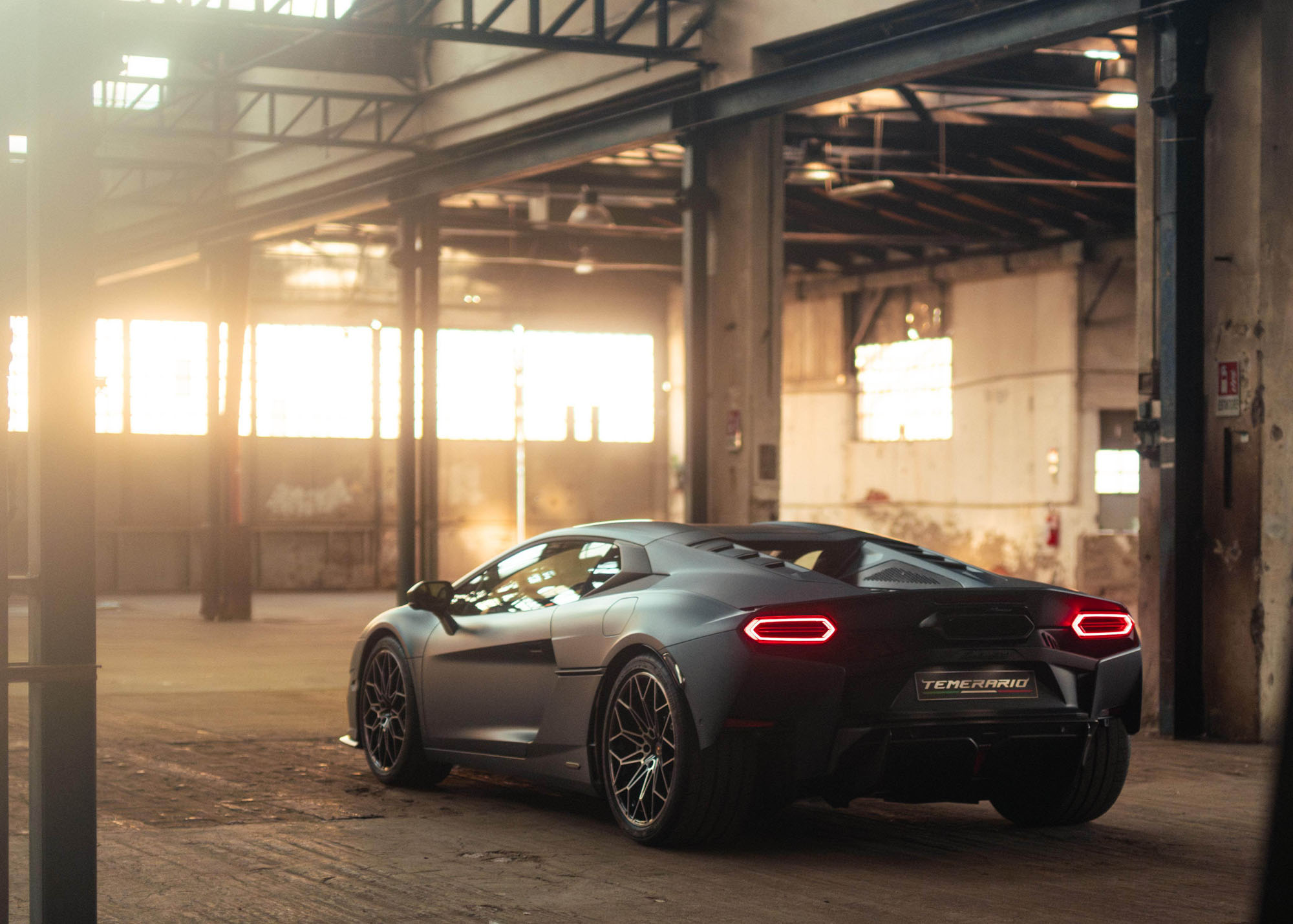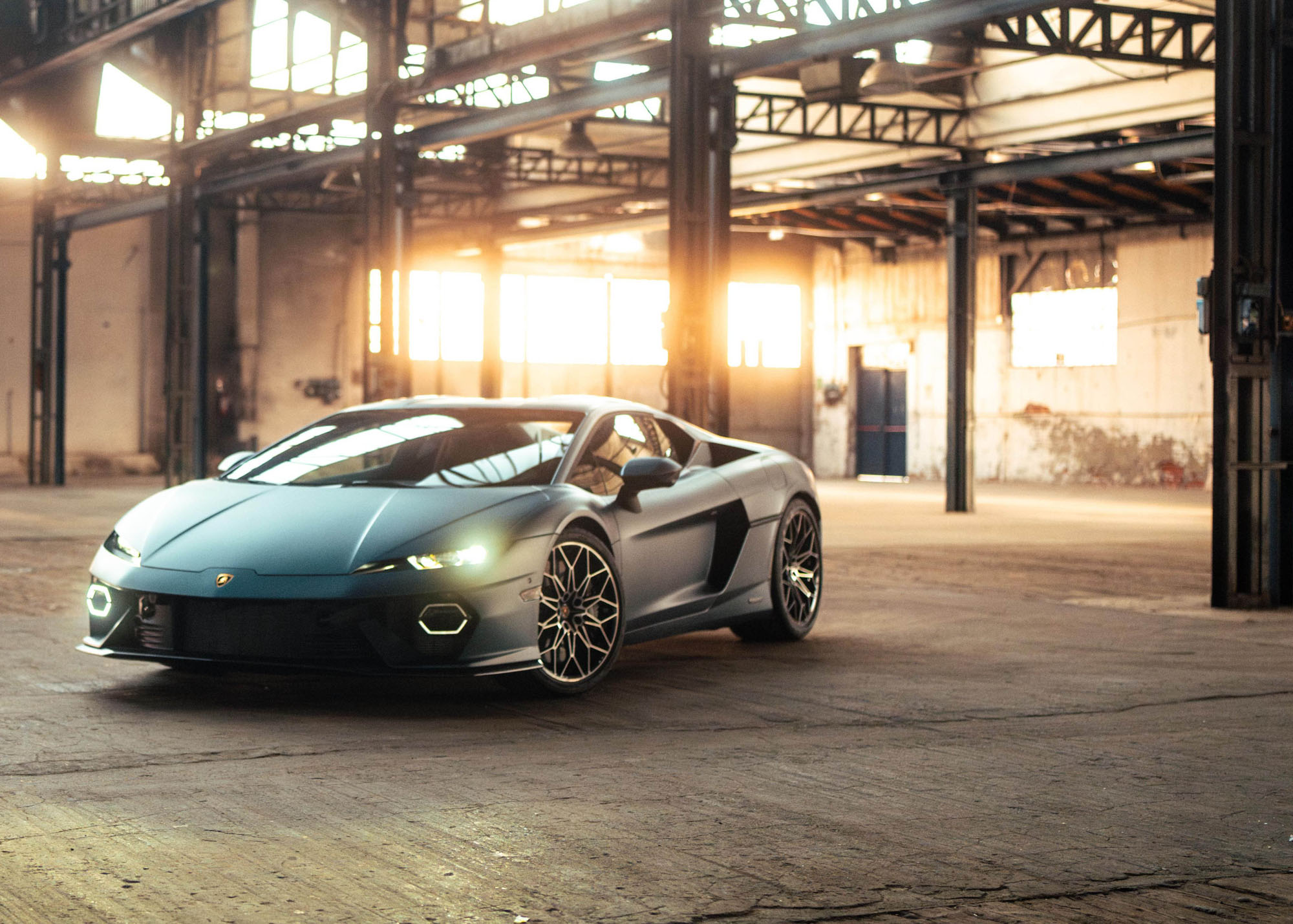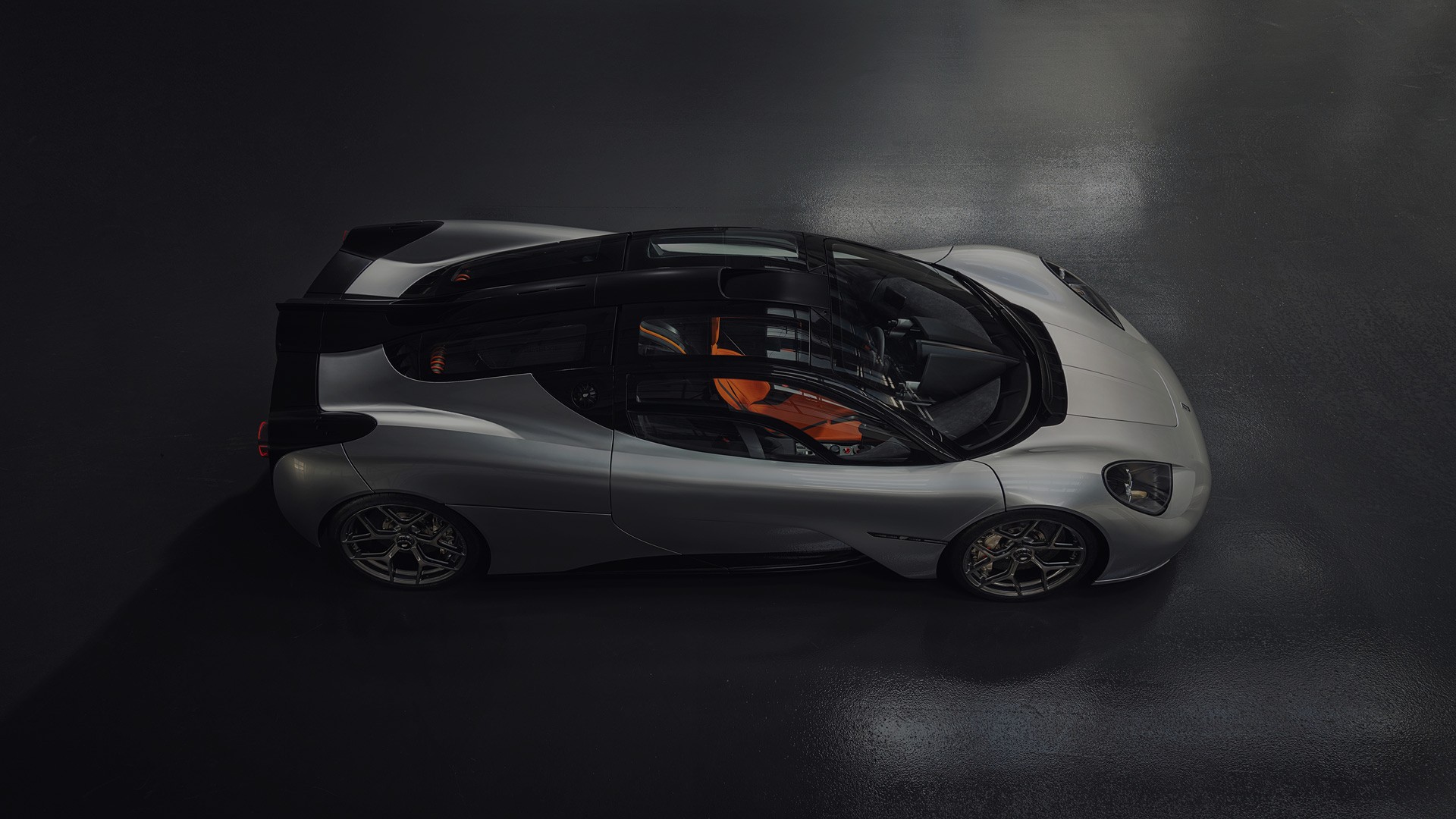The Lamborghini Temerario presents itself as the new benchmark in the super sports car segment, thanks to class-beating performance. The new hybrid powertrain combines an entirely new twin-turbo V8 engine with three electric motors, providing a total power output of 920 CV. The twin-turbo V8 has been designed and developed from scratch in Sant’Agata Bolognese and is the first and only production super sports car engine able to reach 10,000 rpm. The performance is an absolute revelation: maximum speed of over 340 km/h (210+ mph), 0 to 100 km/h (0-62 mph) in just 2.7 seconds.
Engineering Goals Related to Aero Efficiency
The Temerario, Lamborghini has achieved the peak of aerodynamic efficiency by attaining three primary design goals:
- Stability at high speeds
- Increased cooling performance
- Maximum braking efficiency
Increased Downforce
Lamborghini’s designers and engineers took into account the new hybrid powertrain and the increased aerodynamic load targets, particularly at the rear, when developing the bodywork and underbody of the Temerario: the result is +103% rear downforce compared to the Huracán EVO, increasing to +158% if the car is equipped with the Alleggerita Pack.
Controlling Airflow
Designed to contribute to excellent aerodynamic performance. Starting with the front, where the DRLs have become aerodynamic elements, the hexagonal lights with dedicated air intakes and deflectors have the task of conveying airflow from the bumper to the upper part of the side radiators, and the two fins have been installed on the inlets. The upper fin with a wing-shaped profile diverts the flow downwards, which is captured by the second horizontal fin, directing it to enter the radiator perpendicularly and maximizing cooling efficiency.
Cooling Capacity
Moreover, the fins that make up the grilles on the wheel arches convey the flow to the outside of the wheel, moving it away from the side radiator and minimizing its slipstream, with the dual effect of reducing aerodynamic resistance and moving the downforce towards the rear. The wing mirrors, working in unison with the front of the vehicle, have the goal of not only minimizing drag, but also directing the air towards the side radiators, increasing the cooling capacity of the mechanical components.
The roof design with a central channel directs air towards the rear spoiler, integrated in the vehicle body and thus improving the aerodynamic efficiency and increasing downforce. The curved sides of the engine hood also contribute to this result, increasing the portion of air that flows through the side part of the spoiler. The optional Alleggerita package features a high-load lightweight rear spoiler, obtained by increasing the height of the trailing edge with the consequent increase in curvature.
Underbody
The vehicle’s underside also plays a structural role in aerodynamic efficiency. The underbody is equipped with vortex generators: three pairs of fins arranged like the branches of a tree increase the rear aerodynamic load, assisting the action of the diffuser which, thanks to a 70% greater surface area compared to the Huracán EVO and an angle increased by 4°, maximizes the vertical extraction of the air flow from the bottom. The increased cooling demand dictated by the new turbo-hybrid powertrain has necessitated the development of a new radiator layout, providing a 30% improvement in cooling performance.
Brakes
Moreover, to maximize the Temerario’s exceptional performance, a new brake cooling concept has been developed to optimize vehicle braking. The front section incorporates a deflector fastened to the lower suspension arm, exploiting the flow diverted by the front diffuser and directing it towards the front brake caliper, helping to cool it. Another two specific inlets have been incorporated into the bumper to convey a high air flow from the bumper itself towards the disc ventilation channels; then a wye duct – with dual inlet but a single outlet – draws in air at high pressure, helping to improve the brake system’s cooling. The overall result is a total improvement in cooling performance over the Huracán EVO of 20% for the discs and 50% for the calipers.
The rear incorporates a solution already successfully tested on the Revuelto. The ventilation channels of the rear discs are fed via a NACA duct positioned in the front part of the rear wheel housing, which collects the high-energy flow of the underbody and directs it towards the brake cooling duct.
Above content © 2025 Lamborghini S.p.A, reviewed and edited by Rex McAfee


